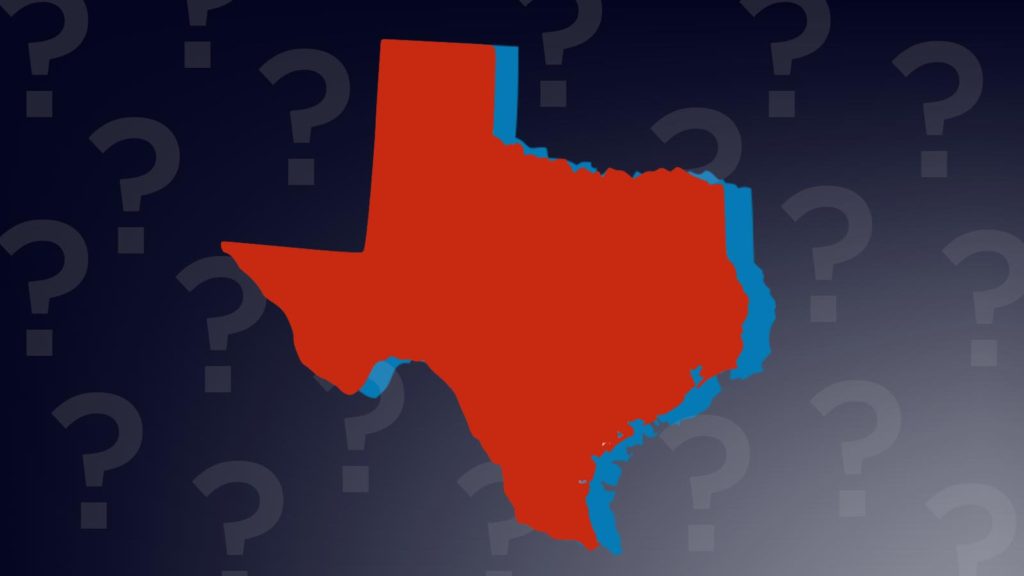
2020 was not the Democrats’ first rodeo in Texas. In fact, Texas has been on the Democrats’ radar as a potential swing state for several years. Most recently, many were counting on Beto O’Rourke’s inspirational grassroots campaign in 2018 to turn Texas blue, but O’Rourke lost by a heartbreakingly narrow margin to Senator Ted Cruz. This defeat was disappointing, but I wrote in 2018 that O’Rourke’s campaign was a catalyst that sparked “a paradigm shift in the Lone Star State that many thought could never happen.” Instead of deep red, Texas was turning purple.
Fast forward to 2020. Texas was again on the list of swing states that had the potential to shift from a Republican stronghold to a Democratic upset. Media outlets covered the potential flip in the days leading up to the November 3 election by saying that “Texas could go blue this year” and that the candidates were in “a Texas stand-off.” Several polls even showed that President Donald Trump and now President-Elect Joe Biden were tied in Texas.
Aiding the high hopes of Democrats across the country was the massive early voting turnout in the Lone Star State. During the early voting period alone, over 9.7 million Texans voted, which is about 57 percent of registered voters and almost one million more votes than the total number of voters in 2016. On Election Day, the total rose to about 66 percent of registered voters, or 11.2 million, which is the highest voter turnout Texas has seen since 1992.
In the end, hopes of a blue wave across Texas were crushed pretty quickly as results started to roll in on Election Day. The record voter turnout, polls, and hype from the media did not accurately predict the results of the election in Texas. The final results show that President Trump received 52.2 percent of the vote, while President-Elect Biden received 46.4 percent of the vote. However, Texas did see a blue shift in the total statewide margin between presidential candidates; in 2016, the margin was 9.0 points in favor of Donald Trump, and in 2020, the margin shrunk to just 5.8 points.
Pictured: People wait in line to vote at the Tarrant County Elections Center on the last day of early voting in Fort Worth. Photo courtesy of Montinique Monroe/Getty.
I spoke to four Texas voters about their own pre-election predictions for Texas, and the results were mixed.
A 20 year old grocery store employee and full-time student told me “I honestly thought this would be the year Texas went blue.” She felt this way because of the increase in youth political participation in Texas, as well as the influx of voters from traditionally liberal states such as California because of lower taxes and cheaper real estate.
Another respondent, a 21 year old artist/creator, full-time worker, and student, echoed similar sentiments: “I knew deep down that Texas might still be a red state, but I truly had hopes it would be a blue state this election.” She also feels that young people will be the ones to enact progressive change in historically conservative communities that “fail to recognize that so many people around them don’t have the same freedoms they have today.” The historically conservative mindsets of many rural Texans will likely be difficult to change, but fighting for equity and justice will be worth it.
On the other hand, a 22 year old ICU nurse said she was confident that Texas would remain red due to voter suppression and gerrymandering. These are two huge obstacles for voters in Texas, especially in 2020 when safe voting options were limited despite the ongoing COVID-19 pandemic.
In terms of voter suppression, Texas has strict voter ID laws, restrictions for mail-in voting, and in October, Governor Greg Abbott passed an executive order “restricting mail ballot collection boxes to one per county.” This move to limit ballot collection boxes made it extremely difficult for voters in very populous countries to drop off their ballots; Harris County, home to Houston, has a population of 4.7 million and had to use one collection box. This move also disproportionately impacts communities of color and makes it more difficult for them to cast their votes in urban areas.
Finally, a 40 year old software architect told me that he was certain Texas would remain a red state.
“There are so many die hard Trumpers that basically worship the man,” he said.
He also pointed out the fears among many conservative Texas voters that Democrats would bring socialism to the United States, as well as the many single-issue voters who vote to restrict access to abortion. However, he does think that “there’s a chance Texas could be blue in 2024 or 2028, especially with more liberal people moving to Texas.”
Pictured: A June Black Lives Matter protest in Granbury, a conservative small town in central Texas. Photos courtesy of Traci Niedziela, image created by Cassi Niedziela.
The demographic shift in Texas, voter suppression and gerrymandering, and a history of conservatism will all play a key role in the future of the Lone Star state’s voting patterns.
While the state is becoming increasingly racially diverse with a large increase in the Hispanic population and a substantial increase in the Black population, it is crucial to keep in mind that these groups are not monolithic. In fact, in 2020, many Hispanic voters in Texas leaned Republican. So, if Democrats are to win over more members of these groups in the future, they will need to listen to the variation in what these groups actually want. Democrats cannot afford to take voters of color for granted, and they need to start seeing them as a diverse voting bloc rather than a group that always votes in the same way.
Texas also needs to have a drastic change when it comes to voter suppression. Legislators should be making it easier to vote, not more difficult; this is the foundation of a functional democracy. Quite simply, if the party in power needs to restrict voting access in order to stay in power, it’s time for a major change.
Finally, Democrats will need to comprehensively look at the issues that voters in Texas care about without compromising their core party values, if they want to expand their coalition. From the right to bear arms to the oil and natural gas sector, and from immigration reform to supporting farmers and ranchers, Democrats need to maintain their progressive values while also expanding their tent to include those with variations in their ideas.
For example, in order to protect people from gun violence while simultaneously assuaging fears that the government is going to ban all guns, Democrats should continue to promote common sense gun legislation that makes gun ownership safer for all people. In terms of the oil and natural gas sector, Democrats should continue to support legislation that will protect the environment from devastating ruin, such as a push towards renewable energy sources. In order to keep conservative support, perhaps a good solution would be to guarantee jobs for those in the oil industry in the new renewable energy sector.
Regardless of the exact trajectory, the Democratic party needs to meet Texans where they are and understand that life in a rural community in Texas is very different from life in a large metropolitan area like New York City, and the party platform should represent that.
Should Democrats remain hopeful about Texas? Absolutely! But there is still a long road ahead to turn Texas from purple to blue. I am very confident that one day, come hell or high water, Texas will turn blue.



